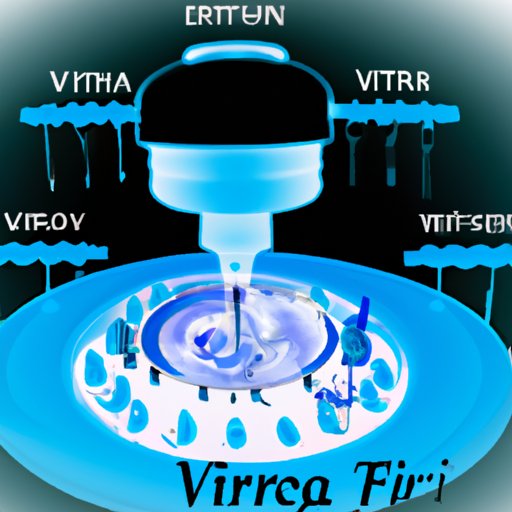Introduction
IVF (in-vitro fertilization) technology is a revolutionary medical procedure that has enabled thousands of couples to become parents. The process involves the retrieval of eggs from a woman’s ovaries and fertilization with sperm in a laboratory setting. Once fertilization is successful, the embryos are then transferred into the uterus for implantation. In this article, we will explore the science behind IVF technology, the cost and benefits of treatment, the success rates and common questions about the procedure.

Exploring the Science Behind IVF Technology
The IVF process begins with a fertility specialist performing ovarian stimulation, which involves administering hormones to the woman to stimulate the production of multiple eggs. The eggs are then retrieved through a surgical procedure known as egg retrieval. During this process, the doctor uses a needle to aspirate the eggs from the follicles in the ovary. The eggs are then combined with sperm in a laboratory setting to create embryos. The embryos are then transferred to the uterus where they may implant and develop into a pregnancy.
IVF technology has its pros and cons. On the positive side, it can be used to treat many different types of infertility issues and can result in a successful pregnancy. It also allows couples to have more control over the genetic makeup of their child by using donor eggs or sperm, or preimplantation genetic diagnosis (PGD). On the downside, IVF can be costly, time consuming and emotionally draining. Additionally, there is a risk of multiple births, which can lead to health complications for both mother and babies.

Understanding the Cost and Benefits of IVF Treatment
The cost of IVF can vary depending on the clinic, but typically ranges from $12,000-$15,000 per cycle. This cost includes the medications, laboratory services, and physician fees associated with the procedure. Although expensive, IVF technology can result in a successful pregnancy and provide couples with the opportunity to start a family.
In addition to the financial considerations, there are also potential benefits of undergoing IVF treatment. For example, the procedure can help women with fertility issues conceive and carry a pregnancy to term. It can also provide couples with the opportunity to have children who are genetically related to them, or to select the gender of their baby if desired. Furthermore, IVF can help individuals who are unable to conceive naturally, or those who are carriers of certain genetic diseases.
A Look at the Success Rates of IVF Procedures
The success rate of IVF depends on a variety of factors, such as the woman’s age and the quality of the embryos. Generally, younger women tend to have higher success rates than older women. Other variables that can affect the outcome include the number of embryos transferred, the quality of the laboratory environment and the experience of the medical team.
Statistics from the Society for Assisted Reproductive Technology show that the cumulative live birth rate for women aged 35 and under is 43.7%. This rate increases to 54.1% for women aged 36-40 and decreases to 28.3% for women aged 41-42. It is important to keep in mind, however, that these statistics are based on the average success rates across all clinics and may not reflect the individual chances of success.

Common Questions About IVF Technology Answered
Many couples considering IVF have questions about the procedure. Here are some of the most commonly asked questions:
What is the age limit? Most clinics accept women up to the age of 45 for IVF treatment. However, it is important to note that the chances of success decrease as a woman gets older.
What are the risks involved? As with any medical procedure, there are risks associated with IVF. The most common risks include bleeding, infection, and ovarian hyperstimulation syndrome (OHSS). It is important to discuss these risks with your doctor before proceeding with the procedure.
Are there alternatives to IVF? Yes, there are other treatments available for infertility, such as intrauterine insemination (IUI) and assisted hatching. It is best to discuss the different options with your doctor to determine which one is right for you.
Conclusion
In conclusion, IVF technology is a revolutionary procedure that has helped countless couples become parents. The process involves retrieving eggs from the woman’s ovaries, fertilizing them with sperm in a laboratory setting, and transferring the embryos into the uterus for implantation. There are both financial and potential benefits associated with the procedure, although success rates vary depending on the individual. Common questions about IVF have also been answered. Ultimately, it is important to speak to your doctor to determine if IVF is the right option for you.
(Note: Is this article not meeting your expectations? Do you have knowledge or insights to share? Unlock new opportunities and expand your reach by joining our authors team. Click Registration to join us and share your expertise with our readers.)
